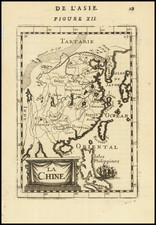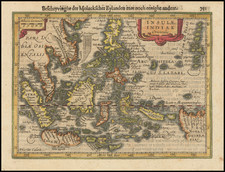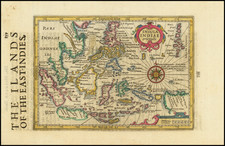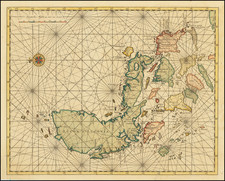Rare separately published Spanish sea chart illustrating a portion of the Philippine Islands near the Isla de Masbate.
The chart covers the port of Cataignan in the southeastern part of the Isla de Masbate and the Port of Palanog.
Rarity
The chart is extremely rare. We were unable to find any prior auction or dealer records.
OCLC locates a single example in the National Library of Spain.
Chart Pricing Note
The price notation provided for the chart translates to a pricing structure based on different currencies and locations. The notation "PRICE 6 RSV4 - In America 4 R. Pta Fte" can be broken down as follows:
-
PRICE 6 RSV4: This likely stands for "6 reales de vellón," a unit of currency used in Spain at the time. The "RSV" would be an abbreviation for "reales de vellón," and the "4" might refer to an additional fractional amount, possibly in cuartos (which were a smaller denomination of currency).
-
In America 4 R. pta Fte: This means that in Spanish America the price was 4 reales or 1 peseta fuerte. In 1864, in preparation for joining the Latin Monetary Union (set up in 1865), Spain adopted the peso duro, equal to 5 pesetas fuertes or 20 reales de vellón. The peseta became the official currency of Spain in 1868.
The Dirección de Hidrografía, or the Directorate of Hydrographic Works, was established in 1797. Its roots were in the Casa de Contratación, founded in 1503 in Sevilla, which housed all the charts of the Spanish Empire and oversaw the creation and maintenance of the padrón real, the official master chart. The Casa, now in Cadiz, was shuttered in 1790, but Spain still needed a hydrographic body. In response, the Dirección was created in 1797. One of its first projects was the publication of charts from the Malaspina Expedition (1789-1794). The Dirección oversaw not only publication, but also surveying. The Dirección was abolished in the early twentieth century, when their work was distributed to other organizations.










![[ Philippine Islands & Spice Islands ] Isles Philippines et Moluques . . .](https://storage.googleapis.com/raremaps/img/small/99646.jpg)

![(Second World War) Your Submarine Versatile Warship [on verso:] NEWSMAP For the Armed Forces 268th Week of the War - 150th of U.S. Participation](https://storage.googleapis.com/raremaps/img/small/95106.jpg)

